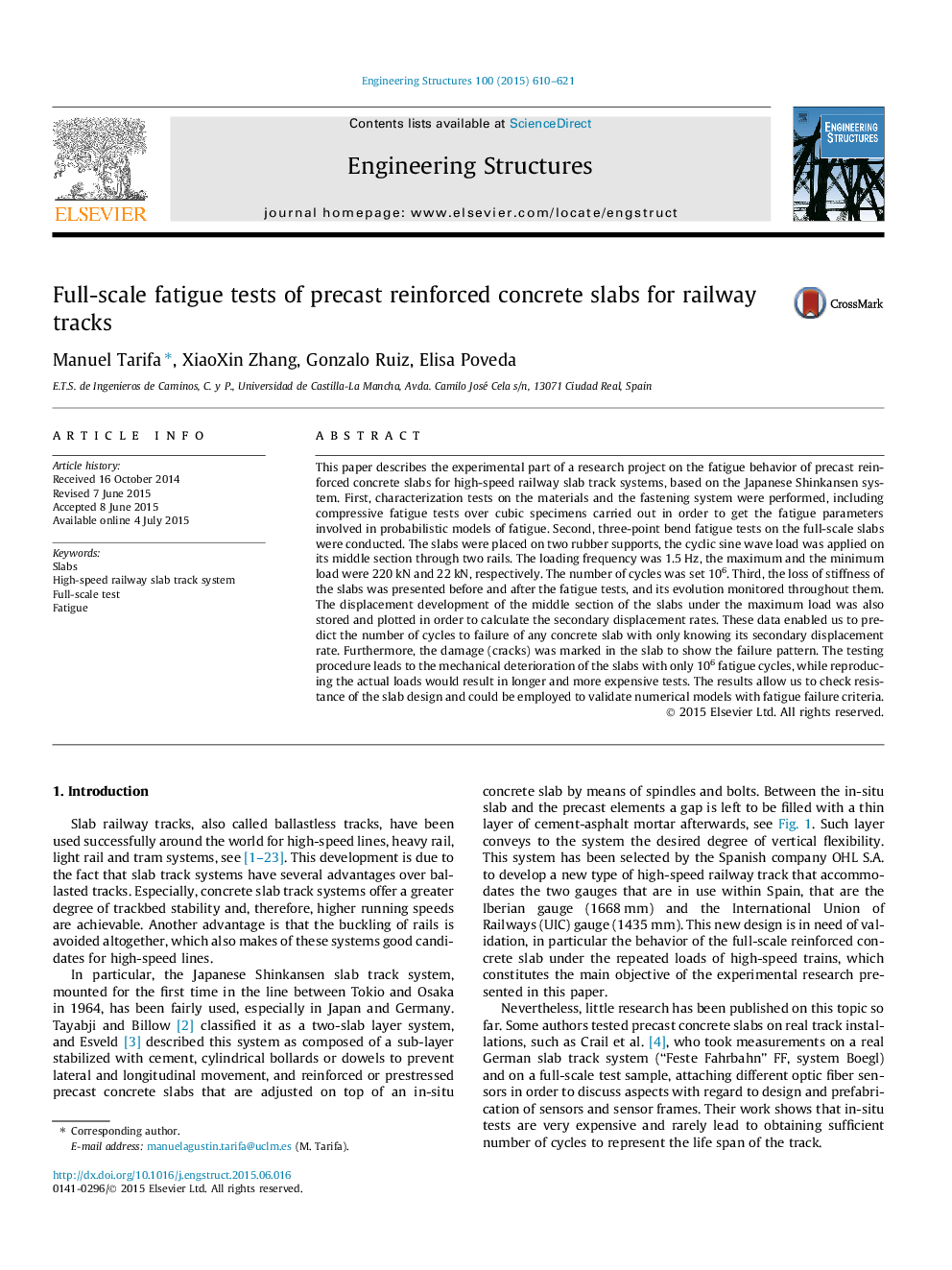| کد مقاله | کد نشریه | سال انتشار | مقاله انگلیسی | نسخه تمام متن |
|---|---|---|---|---|
| 266143 | 504344 | 2015 | 12 صفحه PDF | دانلود رایگان |
• We propose an economic laboratory test on concrete slabs for high-speed track systems.
• The test procedure can produce measurable damage with only 106 cycles.
• We perform characterization tests including fastening system tests.
• We make compressive fatigue tests on concrete in order to get its fatigue parameters.
• We are able to detect critical damage on the slabs and to predict its life.
This paper describes the experimental part of a research project on the fatigue behavior of precast reinforced concrete slabs for high-speed railway slab track systems, based on the Japanese Shinkansen system. First, characterization tests on the materials and the fastening system were performed, including compressive fatigue tests over cubic specimens carried out in order to get the fatigue parameters involved in probabilistic models of fatigue. Second, three-point bend fatigue tests on the full-scale slabs were conducted. The slabs were placed on two rubber supports, the cyclic sine wave load was applied on its middle section through two rails. The loading frequency was 1.5 Hz, the maximum and the minimum load were 220 kN and 22 kN, respectively. The number of cycles was set 106. Third, the loss of stiffness of the slabs was presented before and after the fatigue tests, and its evolution monitored throughout them. The displacement development of the middle section of the slabs under the maximum load was also stored and plotted in order to calculate the secondary displacement rates. These data enabled us to predict the number of cycles to failure of any concrete slab with only knowing its secondary displacement rate. Furthermore, the damage (cracks) was marked in the slab to show the failure pattern. The testing procedure leads to the mechanical deterioration of the slabs with only 106 fatigue cycles, while reproducing the actual loads would result in longer and more expensive tests. The results allow us to check resistance of the slab design and could be employed to validate numerical models with fatigue failure criteria.
Journal: Engineering Structures - Volume 100, 1 October 2015, Pages 610–621
